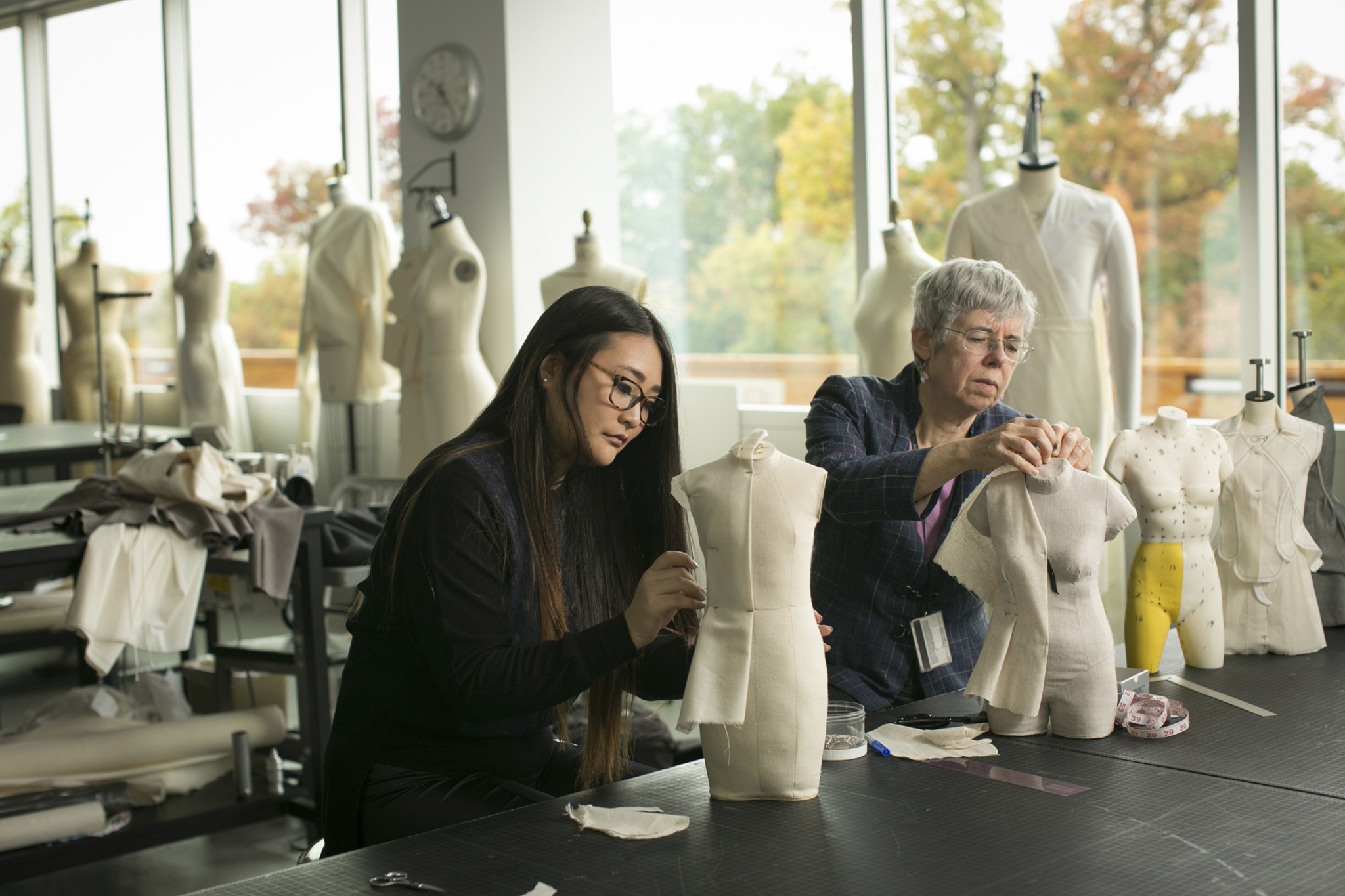Digitally made half forms offer apparel designers new tools
By Blaine Friedlander

Half is more. To fit clothes to a wide variety of bodies, Susan Ashdown gives the world a better fit using precise, half-scale dress forms. As apparel production moves away from large quantities of cookie-cutter clothes to mass-customized target market sizing, Ashdown, the Helen G. Canoyer Professor in the Department of Fiber Science & Apparel Design, employs a 3-D body scanner to capture the body and scales down the dimensions by 50 percent.
With 3-D printed half-scale clothing forms, the individuality of the body shape is retained – but an apparel maker wastes less material in creating pattern shapes.
“It’s very different from the original standard half-scale forms, which have been used by apparel designers for decades – perhaps with specified bust and hip dimensions,” said Ashdown. “With these half-scale forms we have the actual body shape, proportions and posture.”
The first step in creating the modern half-scale form is the 3-D scanner: Cornell’s Human Solutions scanner uses eight cameras and four eye-safe lasers to capture about 300,000 data points – which are then triangulated – in only 12 seconds. The half-scale dress forms that are made from these scans are used to create prototype design in three dimensions, draping and pinning the fabric onto the desired silhouette.
Half-scale forms have the potential to transform how the garment industry creates patterns by making draping practical. “We tend to use flat pattern making more than draping because it takes so much time, effort, space and material to create on the full-scale form,” said Ashdown. “On a half-scale form you can make many models in the time it takes to make one full-scale model, and you can work at your desk instead of in a studio.”
Ashdown seeks new ways to incorporate half scale in manufacturing processes. “We’re looking for ways to quickly perfect our patterns, perfect our shapes and create the proportions and the flow that we want,” she said, explaining that patterns could be digitized into computer-aided design systems to be scaled up to a full-scale pattern. “That is a precise process, but it is very fast to create an iterative set of prototypes, thinking beyond the first solution,” she said.
To share these technologies more widely, Ashdown leads the Halfscale Forum for Creative Patternmaking, an online, eight-week design colloquium for apparel industry professionals, fashion educators and students. Participants discuss creative patternmaking, and make and critique designs using half-scale forms loaned to Cornell from the maker Alvanon.
So far, Ashdown and colleagues have led two sessions, with plans to reach more participants through the Cornell Institute of Fashion and Fiber Innovation (CIFFI), a collaborative research institute launched in 2013.
Said Ashdown: “Working on the half scale is fun, as it allows you to play with proportions that you can’t do easily on a full scale. You’re not working with so much fabric. You are working in an easier and more compact way.”
Media Contact
Get Cornell news delivered right to your inbox.
Subscribe